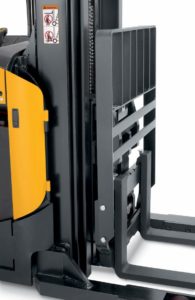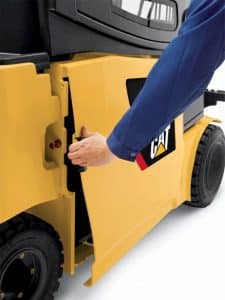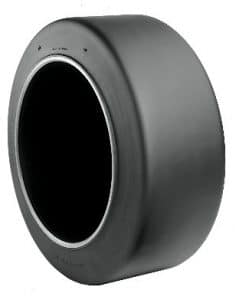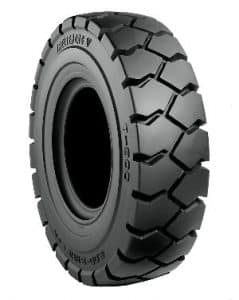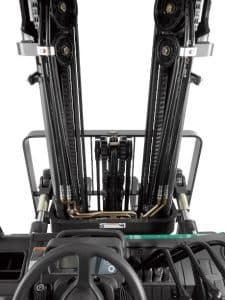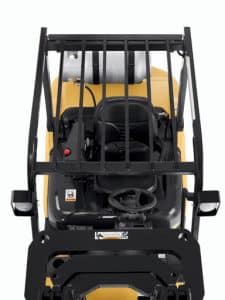If you are new to the forklift industry, forklift terminology may seem confusing at times. If you are a seasoned veteran, it is still important to familiarize yourself with forklift terminology and definitions for training purposes. To help, we’ve provided this glossary of common forklift terms.
Lift cylinder
The lift cylinders are responsible for hydraulically controlling the raising and lowering of the mast.
The load backrest is a very important part of any forklift. It is attached to the carriage and is responsible for restraining the load when the load is tilted rearward or upward. The forklift’s backrest also aids in protecting the mast and the cylinder hoses.
Capacity
When choosing a forklift, whether for purchase or rental, it is very important to be aware of its capacity. The capacity is a rating given to determine the amount of weight that can be lifted to a specific load height at a specific load center.
Battery capacity
This term is a measure of the charge stored by the forklift’s batteries. It represents the maximum amount of energy (typically measured in Amp-hours) that can be extracted from the battery during operation.
Battery compartment
The battery compartment is the area of the forklift that holds the battery or batteries. The compartment can vary greatly in size and are typically measured using the length of the compartment multiplied by the width and the height (L x W x H). Knowing the specific dimensions can be important when choosing a forklift that is suitable for your needs, space and specific application.
Battery model identification
Every electric forklift operates using a battery, and it’s important to know the type of battery needed for your specific forklift. Fortunately, batteries and battery types can be easily identified using a battery model identification code, which is expressed as battery style, number of cells, cell Amp/hr., number of plates, cell arrangement, special features, sequential letters (if needed) and paint codes.
Carriage
Carriage is one of the more frequent terms used, as it relates to forklifts. It refers to the forklift’s support structure, in front of the mast, where the actual forks are mounted.
Cushion tires
Cushion tires are forklift tires designed to be used in indoor applications with flat and even surfaces.
Pneumatic tires
Pneumatic forklift tires are designed to be used in outdoor applications and on uneven surfaces. They can be filled with a rubber compound (i.e. “solid pneumatic”) or be air filled. Air filled pneumatic tires are usually the standard on IC trucks, however solid pneumatic tires are sometimes used based on the application. If your application has a high amount of debris and you experience frequent tire punctures, solid pneumatic tires may offer you a longer tire life.
Free lift
This term refers to the amount of vertical movement that a forklift is capable of before additional mast channels are engaged. Essentially, it refers to the forklift’s ability to lift its forks without raising the mast.
Mast
The mast is the vertical structure of a forklift that provides a supporting pathway for the carriage rollers and allows the forklift to raise and lower the forks and material it’s carrying.
Two stage mast
As the name implies, this is a type of forklift mast that has two stages. These consist of an outer channel, which is mounted to the lift truck, and an inner channel, which elevates when the cylinders extend.
Trucker's mast
This is an exceptionally short specialized type of mast. It is typically used in areas where overhead clearance is restricted and is used on Class IV and V lift trucks, up to 6,000 lb. capacity.
Max full lift height (MLF)
This term refers to the distance from the floor to the very top of the fork surface when the mast is fully extended.
Overall lowered height (OAL)
You may hear this term referred to in conjunction with “mast” often. The overall lowered height is the height at the top of the mast when the mast is completely lowered. The measurements are taken from the floor to the top of the mast.
Overhead Guard
The Overhead Guard is the framework that is fitted to a truck which provides protection for the forklift operator in case of falling objects.
Tynes
Sometimes referred to simply as the “fork” or “forks”, tynes are one of the most vital parts of a forklift. These are the arms found on the load carriage. They either enter a pallet to lift a load, or the load is placed directly on the forks.
Hook fork
Some forks will fall under the classification of “hook forks”. These are forks that lock into the carriage and hook over the bars.

